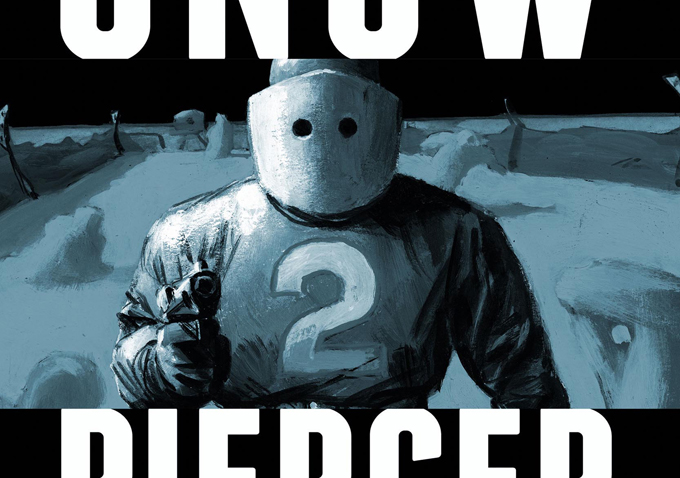
Before we get into this, it’s probably fair to warn that if you haven’t read “Snowpiercer Volume 1: The Escape,” there are spoilers ahead. That said, I’m not going to go too deep into plot mechanics, because if anything, once Jacques Lob‘s story winds up, it’s the journey and experience of the tale that takes precedent. And if ‘The Escape’ was chilly and grim, then ‘The Explorers’ doubles down, with a view of humanity that isn’t quite pessimistic, but certainly embraces the notion that times of crisis can bring out in the worst in people, just as it can the best. But it all kicks off with an approach that completely reorients the point-of-view laid out so far.
Yes, “Snowpiercer” is still set on a train, forever traveling through a post-apocalyptic wintry wasteland on an otherwise uninhabitable Earth, but in ‘The Explorers’ we’re dropped into a second train of survivors. It turns out that more than one vehicle for survival was built, and while this one is a bit higher tech, with a group of travelers slightly more progressive and perhaps marginally less depraved than the other train hurtling around in circles it’s still plagued with power struggles, turmoil between religious nuts and politicians, a populace that needs to be controlled and of course, one rogue man who will have to do the right thing to ensure everyone’s survival. And while the narrative is nicely twisted, in form, Lob’s work stays largely the same.
Again, we’re taken from tail to head of this second Snowpiercer, learning about its fancy capabilities, but it’s also a touch familiar. The tug of war between the leaders, religious groups and the military feels slightly like a retread, which is a shame when the ability of the Snowpiercer 2 to brake (or at least slow down enough to allow for outside exploration) is a thread that demands to be unfurled further. And that’s not to mention a romance that develops between bad boy Puig, and the leader’s daughter Val, that feels rushed and somewhat like a cheap device to add some dimension of emotion to the proceedings. It never quite pays off that way, and their bond often feels like an afterthought in the story, their brief bouts of passion a device, rather than something organically developed.
But where ‘The Explorers’ does find its most compelling hook is in the overall mood and tone, which is grim, dark and bleak. With fears that Snowpiercer 2 will crash into the other train out there, not to mention faith-based fervor building up a conspiracy theory that everyone is actually in outer space, a faintly-detected beacon from across the ocean gives hope that there are others out there. But to find out, Snowpiercer 2 will have to jump the tracks, and move slowly across the frozen waters to discover what, if anything or anyone, awaits. And it’s here where ‘The Explorers’ finds its true thrust, and where it doesn’t disappoint. The decision to break the predetermined course is not without consequences, and this journey into the unknown inspires the most engaging and creative writing and artwork of the two volumes. And the closing panels are less about the resolution of the plot, and more about the lingering thoughts about how we survive our darkest times.
How closely (or not) Bong Joon-ho‘s film adaptation sticks with the graphic novels, I’m not quite sure, though it seems he takes the basic idea and runs with it in his own direction. But it’s clear why the filmmaker found inspiration in both volumes. Story-wise, the graphic novel has issues, from being muddled in some instances, to repetitive in others, with pacing that can sometimes fluctuate wildly. But the core ideas underneath are rich, with a premise that is undeniable unique, even if it strains credulity (something tells us if anything like that the event in the graphic novel happened, plans would be more elaborate than sticking everyone on a train running in a loop). Lob is at his best, and most interesting, when he’s working with those textures of loss, love, God and how we manage and react in extreme situations of peril. But the need for a “traditional” story structure, and the effort to spell everything out often gets in the way, ultimately making “Snowpiercer” a train with one too many stops. [B-]

